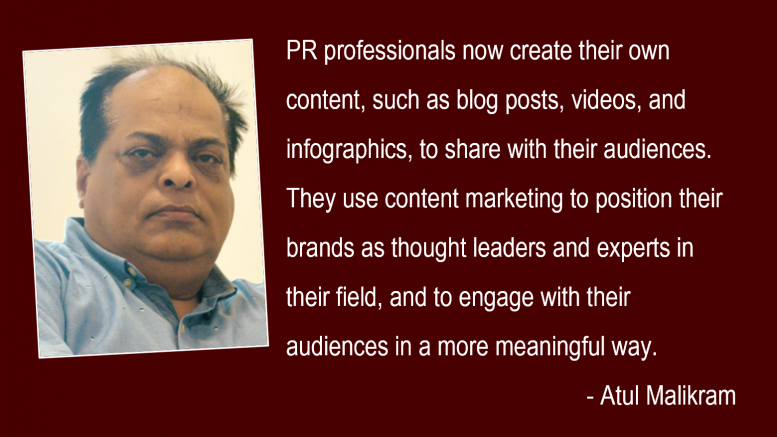To say technology has changed our lives would be an understatement. Technology has vastly affected the traditional consumer landscape, all the while changing the way we consume everything from shopping to morning weather updates. While the population going into retirement can remember a time when media was constrained to magazines, newspapers and possibly two or three channels, a little over half a century later, Gen Z’s ‘digital natives’ are traveling with the internet in their pockets. The technological advances of the 21st century have changed the way the world connects, consumes, digests and re-narrates information.
The evolution of Media Landscape:
The changing media landscape has been a popular subject for discussion in public relations literature and practice for over a decade. With the invention of the printing press, PR practitioners have had to adapt and evolve with the ever-changing media landscape. The technological advances of today have been instrumental in strengthening the fundamental roles and responsibilities of Public Relations. This has had a hugely positive impact on how PR professionals communicate with their target audiences and the paradigm shift in online communication has changed from a traditional model of an authoritative, top-down, centralised, one-way communication to an interconnected, democratised, two way symmetric communication channel. The PR industry’s position in the media is being transformed as digital and online platforms continue to emerge.
This changing relationship between the traditional model of the brand and consumer in the digital domain suggests that these changes will ultimately affect media relations between public relations practitioners, the press and the audience. Here are some of the ways that PR has adapted to changing media landscapes:
Embracing digital and social media: PR professionals now use digital and social media to engage with their audiences. They use social media platforms like Twitter, Facebook, and LinkedIn to share news and updates, and to engage with customers and influencers. Communicators have learnt that whilst traditional aspects of PR are still used today – e.g. press releases, by-lines and whitepapers – a large percentage of PR is now driven by digital.
Influencer marketing: With the rise of social media influencers, PR has started to incorporate influencer marketing into their strategies.
Content marketing: PR professionals now create their own content, such as blog posts, videos, and infographics, to share with their audiences. They use content marketing to position their brands as thought leaders and experts in their field, and to engage with their audiences in a more meaningful way.
Personalisation: PR professionals now focus on creating personalised experiences for their audiences. They use data and analytics to segment their audiences and deliver customised messaging to each group, rather than using a one-size-fits-all approach.
Crisis management: With the rapid spread of information on social media, PR professionals now have to respond quickly to negative news or crises. They use social media monitoring tools to track conversations and respond to negative comments, and they create crisis management plans to prepare for potential issues.
The new media ecosystem has gone through drastic changes with respect to new trends, prompting PR practitioners to adjust their approaches to fit the current age. Overall, PR has adapted to changing media landscapes by embracing new technologies and strategies to engage with audiences in a more meaningful way. By staying up-to-date with the latest trends and tools, PR professionals can help their clients build strong, lasting relationships with their audiences.
The views and opinions published here belong to the author and do not necessarily reflect the views and opinions of the publisher.



Be the first to comment on "From Traditional to Integrated – How Public Relations Has Adapted to Changing Media Landscapes"